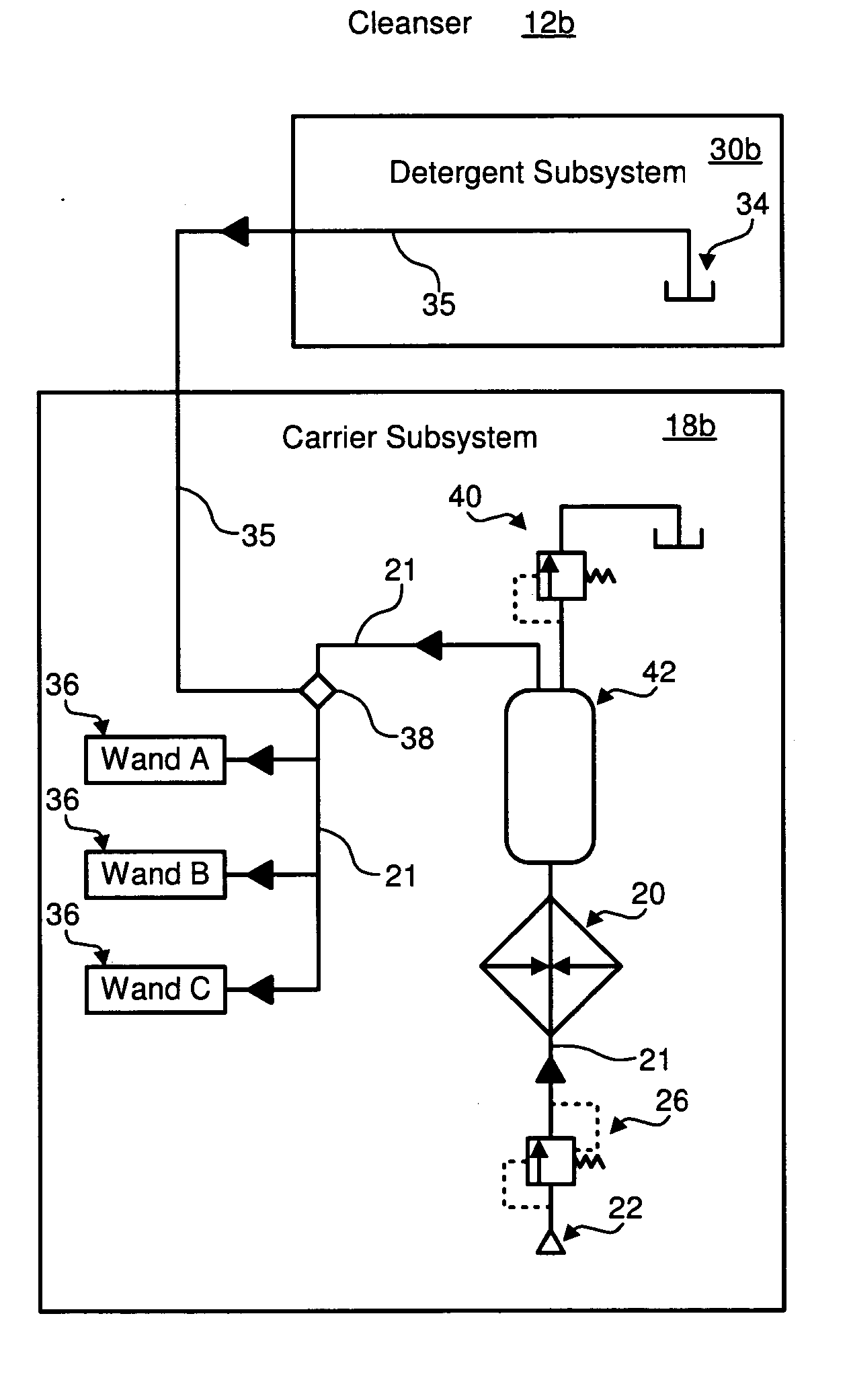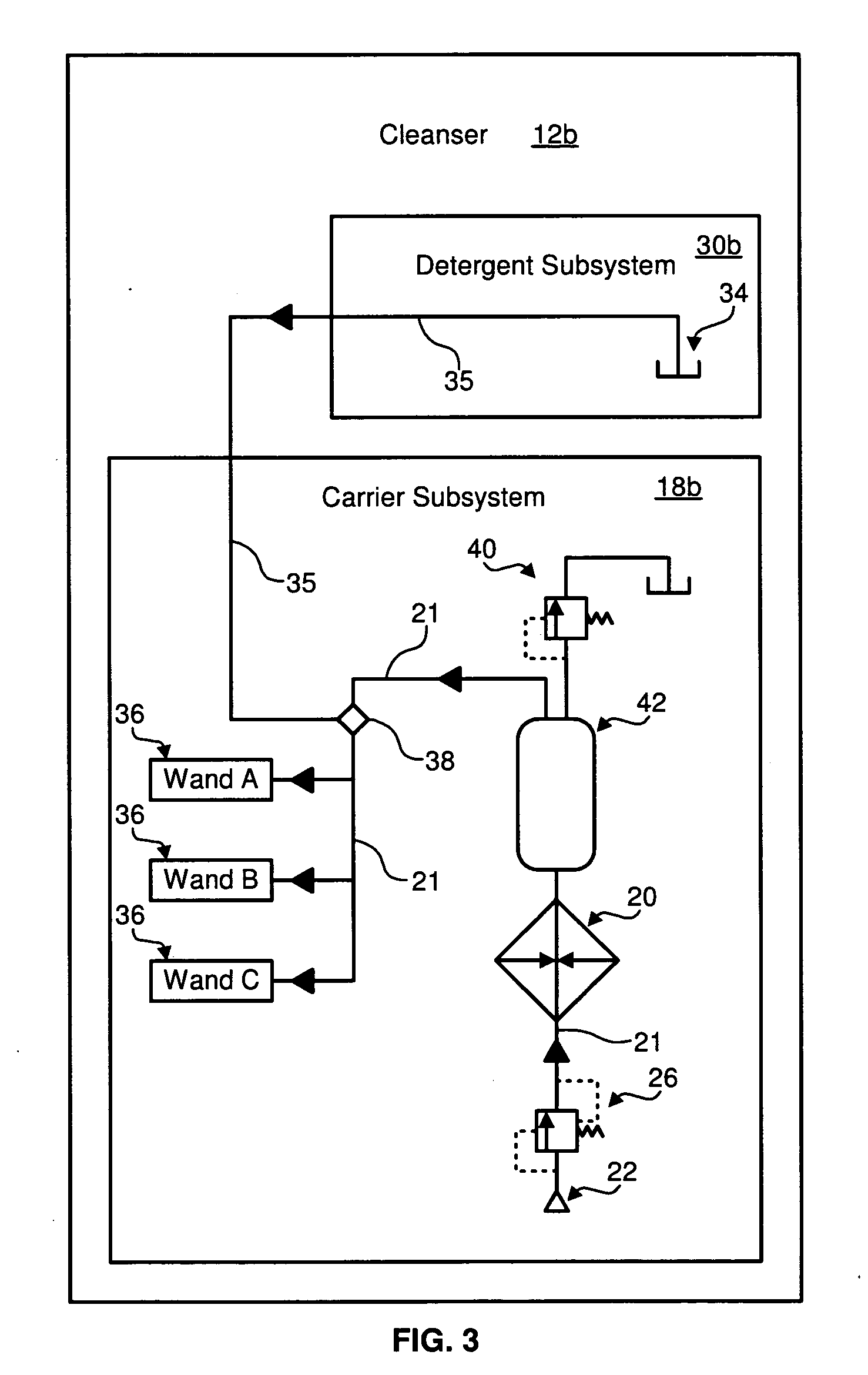Integrated cleaning apparatus and methods
a cleaning apparatus and integrated technology, applied in the field of cleaning systems, can solve the problems of limited interior cleaning options, several hours may be required for cleaning the treated carpet or upholstery, prior art cleaning processes have a tendency to create an odor of mildew, etc., to achieve better and faster cleaning, increase boiling temperature, and increase thermal energy
- Summary
- Abstract
- Description
- Claims
- Application Information
AI Technical Summary
Benefits of technology
Problems solved by technology
Method used
Image
Examples
Embodiment Construction
[0039] It will be readily understood that the components of the present invention, as generally described and illustrated in the drawings herein, could be arranged and designed in a wide variety of different configurations. Thus, the following more detailed description of the presently preferred embodiments of the system and method of the present invention, as represented in the drawings, is not intended to limit the scope of the invention, as claimed, but is merely representative of various embodiments of the invention. The presently preferred embodiments of the invention will be best understood by reference to the drawings, wherein like parts are designated by like numerals throughout.
[0040] Referring to FIG. 1, an integrated cleaning system 10 in accordance with one presently preferred embodiment of the present invention may include a cleanser 12, a collector 14, and a controller 16. The cleanser 12 may condition and distribute cleaning fluids for dissolving, trapping in solutio...
PUM
 Login to View More
Login to View More Abstract
Description
Claims
Application Information
 Login to View More
Login to View More - R&D
- Intellectual Property
- Life Sciences
- Materials
- Tech Scout
- Unparalleled Data Quality
- Higher Quality Content
- 60% Fewer Hallucinations
Browse by: Latest US Patents, China's latest patents, Technical Efficacy Thesaurus, Application Domain, Technology Topic, Popular Technical Reports.
© 2025 PatSnap. All rights reserved.Legal|Privacy policy|Modern Slavery Act Transparency Statement|Sitemap|About US| Contact US: help@patsnap.com



